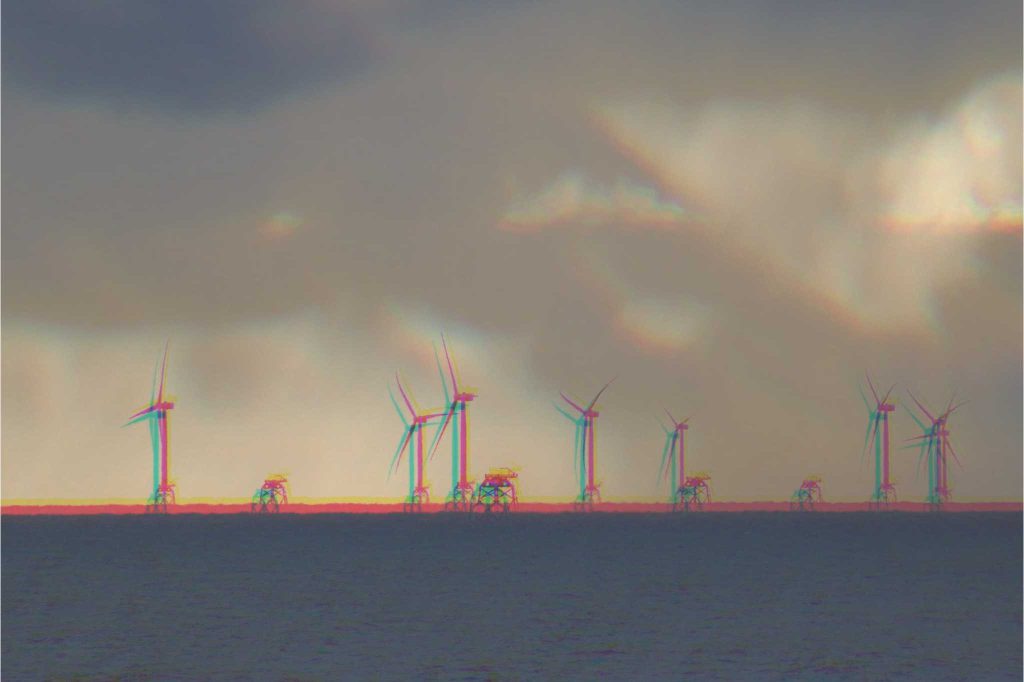Ireland’s ambition to decarbonise our energy systems using offshore wind as the major element of our electricity generation capacity is well-flagged and much discussed by the IWDG. Offshore wind is also being planned, developed and rolled out across the world, notably in Europe, the UK, Asia and the United States. As a source of clean energy that is affordable and uses existing technology it is, so far, the most effective and efficient choice.
However not everyone is convinced and a great deal of contradictory information swirls around the internet. The negative online discussion comes from various standpoints: many are concerned for the environment; some are concerned about the visual impact; the fishing industry and others worry that their livelihoods will be impacted. Some people are resistant to change and do not trust industry, the State or its agents.
Two reports have been published in recent days which attempt to debunk some of the “counter factual” information. Wind Energy Ireland (WEI) has become aware of an argument that offshore wind should be banned from sites closer than 22km from shore, and that this is European “best practice”. They have produced a briefing paper (see link below) which rebuts this in detail. They note that 12GW of existing offshore wind in Europe is built within 22km of the coast, representing 35% of installed capacity; and that there is a further 20GW at various stages of development which is also within 22km. Belgium and the Netherlands do restrict offshore wind applications on the basis of distance from shore, but are fortunate to have shallow water further offshore available for development.
Distance from shore is an important factor in planning, and choices are influenced by water depth and available technology. While it is true that floating windfarms can be located in deeper waters, the technology is not yet mature and is still too expensive. Remember that additional costs will end up on our electricity bills, and that the climate emergency is happening right now.
Further from home in US waters, the Environmental Technical Working Group (E-TWG) is an independent body of state and federal agencies, ORE developers and science-based eNGOs which advises the State of New York. They have published a new report: Frequently Asked Questions: Offshore Wind and Whales (see link below). The main focus of the report is on strandings and unusual mortality events (UMEs), which have been weaponised on social media, with the blame for increased UMEs being put firmly on the offshore renewable industry. The report is well-referenced and based on the scientific literature, and summarises the reasons for UMEs (which apply equally in Irish and other waters):
Strandings are often caused by 1) injuries due to vessel collisions, entanglement or ingestion of active and derelict fishing gear and marine debris, or other human interactions; 2) infectious and non-infectious diseases; 3) malnutrition; 4) unusual weather events or oceanographic conditions; or 5) some combination of these or other factors. Climate change has altered the migration and distribution of whale species and their prey and, in some cases, increased their interaction with vessels and other anthropogenic activities. Climate change also has the potential to contribute to changed patterns of pathogen emergence, distribution, abundance, and transmission, all of which can lead to increased strandings.
The report considers in detail the potential effects of windfarm surveying, construction and operation on marine mammals and recognises in particular the importance of acoustic effects. Under the heading “Does offshore wind energy development kill whales?” the report states:
There is no documented scientific evidence that offshore wind energy activities kill whales. While offshore wind energy development, like any marine development, has the potential to affect whales the sounds produced during all phases (i.e., site assessment, construction, and operations) are insufficient to cause direct mortality. However, the sound emitted may impact hearing or behavior, and cumulation of sounds from anthropogenic sources may lead to chronic effects. There are various mitigation measures in place to reduce risk of potential impacts.
The American approach to underwater noise mitigation during windfarm piling is precautionary and well-developed. The report discusses the full suite of current methods including temporal restrictions, noise abatement (reducing the sound produced during piling, and reducing its propagation), ramp-ups, visual monitoring by marine mammal observers (MMOs), and passive acoustic monitoring (PAM) to detect vocalising cetaceans. Acoustic deterrent devices (ADDs) which are widely used in other jurisdictions are currently not permitted in the US; other methods which show promise in detecting marine mammals are thermal imaging and RADAR.
The Irish approach to protecting whales, dolphins and porpoises during windfarm operations is outlined in Guidance to Manage the Risk to Marine Mammals from Man-made Sound Sources in Irish Waters from DAHG (2014). This document is out-of-date and not fit for purpose in the opinion of the IWDG, and we are encouraged that it is currently under review by the Department of Housing, Local Government and Heritage.
Underwater noise during the development of offshore wind is hugely important and has the potential to seriously impact the marine environment. Fortunately multiple well-developed technologies exist to mitigate in a progressive way: advanced sound modelling must be used to predict the ranges at which marine mammals can be injured or disturbed, then noise abatement technologies can reduce that sound to acceptable levels, shrinking the area within which cetaceans (and other marine species) would be adversely affected. Finally MMOs and PAM operators work to ensure the smaller area is free from mammals before piling starts. The IWDG considers ADDs to be a useful additional tool, which if used correctly along with a ramp-up of piling energy, will encourage animals to flee the area to safety. This belt-and-braces approach is the most precautionary available using today’s technology, and the IWDG looks forward to being involved in the progression of new guidance which is state-of-the-art and current with best European and international practise.
WEI link: https://windenergyireland.com/images/files/20240610-final-updated-distance-from-shore-paper.pdf
E-TWG link: https://www.nyetwg.com/communications-committee

